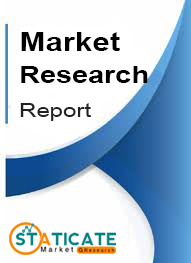Market Introduction:
The global armor materials market was valued at USD 13.62 billion in 2023 and is projected to grow at a compound annual growth rate (CAGR) of 7.81% from 2024 to 2033. By 2033, the market is expected to reach USD 28.89 billion. This growth is primarily driven by the increasing demand for improved security systems, as well as significant investments in military modernization initiatives.
Armor serves as a protective layer designed to shield against threats from projectiles, individuals, and dangerous situations or activities. Traditionally, armor has been constructed from materials such as titanium, steel, and ceramics. However, advancements in technology have enabled the development of lightweight protective materials suitable for various types of clothing, addressing the challenges of modern warfare. These innovative materials feature regulated microstructures that enhance efficiency and durability while maintaining a low weight for high hardness. They offer design flexibility and can effectively counter high-velocity projectiles in combat scenarios. The properties of an armor item, including its durability multiplier, enchantability, armor values, sound effects, knockback resistance, toughness, and the ability to be repaired, are all influenced by the materials used in its construction.
Market Dynamics:
Drivers
Growing Safety Concerns Among Nations: Territorial disputes are more likely to escalate into militarized conflicts compared to other diplomatic issues, such as maritime or economic disputes. Most interstate conflicts have involved countries with territorial disagreements. Nations that share borders are particularly prone to conflict, especially when they contest specific land areas. As geopolitical tensions and territorial conflicts rise, the demand for armor materials is increasing rapidly. Additionally, internal conflicts have heightened the need for protective equipment to ensure national security in various countries, further driving the demand for armor materials utilized in such protective gear.
Restraints
Volatile Material Costs: The armor materials market faces challenges due to the high production costs associated with many of the materials and difficulties in sourcing raw materials. The fluctuating prices of these raw materials significantly affect the armor materials market. When raw material prices rise, the overall product cost increases, leading to decreased demand.
Opportunities:
Rising Investments in Military Modernization Programs: Many countries are restructuring their armed forces to develop powerful, deployable, and efficient military capabilities in response to improved combat strategies and heightened cost awareness in the security sector. These advancements have driven innovation in specialized security equipment that enhances functionality and service while reducing maintenance costs. Such needs have also led to the establishment of military modernization programs aimed at improving armor. Changes in global military operations encompass updates to doctrine, security protocols, training programs, and personnel and force structures. Investments in these modernization initiatives are increasing to enhance air defense systems, improve the mobility of armed forces, and build a more professional military.
Regional Segmentation Analysis:
The armor materials market is analyzed across several regions, including North America, Europe, South America, Asia Pacific, the Middle East, and Africa. North America has emerged as the largest market for armor materials, holding a 37.91% share of market revenue in 2023.
The North American region is expected to continue dominating the market due to its significant revenue growth. There is a strong demand for armor materials to fulfill the manufacturing needs of protective equipment. Additionally, increasing investments in military modernization programs are drawing more regional manufacturers into the market. The development of advanced armor equipment is further driving the demand for armor materials in this region.
Material Type Segment Analysis
The material type segment is categorized into composites, metals and alloys, fiberglass, para-aramid fiber, and UHMWPE. The composites category includes various subtypes such as fabrics, matrix materials, fibers, prepegs, 3D composites, and hybrid composites. The metals and alloys segment consists of materials like aluminum, ceramics, titanium, high-density steel, and others. In 2023, the metals and alloys segment led the market, accounting for approximately 34.92% of the total share. Metals and alloys, including titanium and high-density steel, are widely utilized in military, vehicle, and aerospace applications. The increasing use of titanium and its alloys in military vehicles and armor is expected to drive further growth in the armor materials market.
Application Segment Analysis
The application segment is divided into body armor, vehicle armor, civil armor, aerospace armor, and marine armor. The vehicle armor segment held the largest market share, representing around 39.41% in 2023. The choice of materials for armored vehicles is determined by the vehicle’s intended use and the required level of protection. Improvised vehicle armor consists of protective materials applied to trucks, cars, or tanks using readily available resources.
Some of the Key Market Players:
- 3M
- Allegheny Technologies Incorporated
- AGY Holding Corp.
- CeramTec GmbH
- CoorsTek Inc.
- Compagnie de Saint-Gobain SA
- DSM NV
- Honeywell International Inc.
- E. I. Du Pont De Nemours and Company
- Morgan Advanced Materials
- Royal TenCate NV
- PPG Industries Inc.
- Saab AB
- Tata Steel Limited
- Saint-Gobain SA


